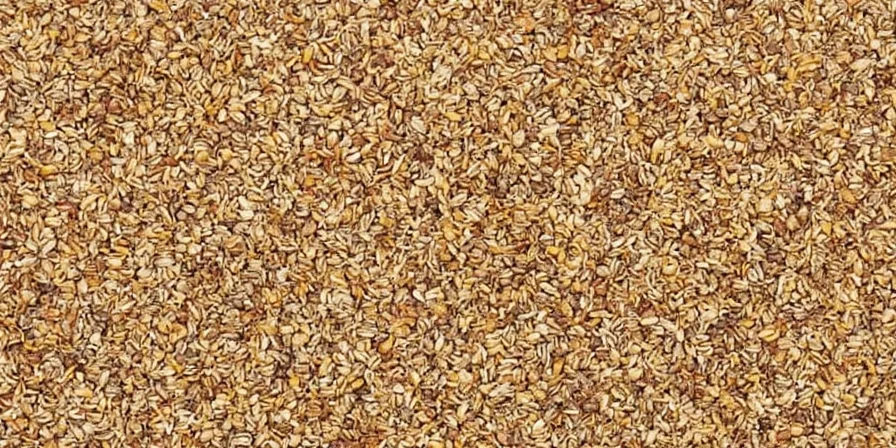If you've ever wondered what caraway seeds are actually good for beyond rye bread, or need a quick substitute when your recipe calls for them, this guide delivers exactly what home cooks search for. You'll discover why caraway belongs in your spice rack, the perfect swaps when you're out, and how to use them properly in 7 practical applications—no chemistry degree required.
What Are Caraway Seeds and Why Are They in Rye Bread?
Caraway seeds are the fruit of the Carum carvi plant, with a distinctive warm, earthy flavor that has subtle minty-citrus notes. They're essential in traditional rye bread because they prevent mushiness while adding complexity—rye dough lacks gluten, and caraway's natural compounds help maintain structure. Unlike cumin (which many confuse with caraway), caraway has cooling properties that balance rye's density.

| Spice | Primary Flavor Compound | Best Used In |
|---|---|---|
| Caraway | Carvone (minty-citrus) | Rye bread, cabbage dishes, cheese |
| Cumin | Cuminaldehyde (earthy-warm) | Chili, curries, taco seasoning |
| Fennel | Anethole (sweet-licorice) | Sausages, fish, Italian breads |
7 Practical Uses for Caraway Seeds (Beyond Bread)
While traditional in German and Eastern European cooking, caraway's real value lies in these kitchen-tested applications:
- Prevent mushy cabbage: Add 1 tsp to braised cabbage or sauerkraut (the oils maintain texture)
- Balanced meat rubs: Combine with smoked paprika for pork or duck (equal parts)
- Cheese companion: Sprinkle on aged cheeses like havarti for flavor contrast
- Dough anti-stick: Moroccan bakers use tiny amounts in flatbreads (1/8 tsp per lb flour)
- Citrus enhancer: Toast with orange zest for fruit compotes
- Digestive aid: Steep in hot water after heavy meals (1 tsp seeds + 8oz water)
- Texture controller: Add to bean dishes to reduce gassiness while maintaining firmness

Perfect Caraway Substitutes (When You're Out)
Running out of caraway doesn't mean scrapping your recipe. Use these chef-tested ratios based on what you're making:
| Dish Type | Best Substitute | Ratio |
|---|---|---|
| Rye bread | Fennel seeds + orange zest | 1:1 seeds + 1/8 tsp zest |
| Braised cabbage | Dill seeds + lemon juice | 3/4 tsp dill + 1 tsp juice |
| Meat dishes | Cumin + smoked paprika | 1/2 tsp cumin + 1/4 tsp paprika |
How to Store Caraway Seeds Properly
Caraway loses potency faster than most spices. For maximum freshness:
- Whole seeds: Store in airtight container away from light (6 months shelf life)
- Ground caraway: Freeze in small portions (use within 2 weeks)
- Reviving stale seeds: Toast in dry skillet 60 seconds on lowest setting
- Pro tip: Crush with coarse salt in mortar—salt crystals expose fresh oils without heat degradation

Caraway Health Benefits: What Actually Works
Traditional claims about caraway's health benefits need clarification. Recent research shows:
| Claim | Reality | How to Use |
|---|---|---|
| Digestive aid | Proven for cramping relief | Add 1 tsp to cabbage dishes |
| Blood sugar control | Only in animal studies | Not reliable for humans |
| Antimicrobial | Lab results only | No kitchen application |
For digestive benefits, use whole seeds in cooking—extracts and supplements don't provide the same effects. Culinary amounts (under 1 tsp daily) are safe during pregnancy, but therapeutic doses should be avoided.
Troubleshooting Common Caraway Problems
Fix these frequent issues with science-backed solutions:
- Too bitter after toasting? You overheated them—toast under 300°F for 60 seconds max
- Overpowering in soup? Add 1 tbsp apple cider vinegar + ½ cup shredded cabbage
- Can't taste it in baked goods? Bloom in melted butter before adding to dough
- Confused with Persian cumin? They're different—Persian cumin lacks mint notes and requires double the amount
Caraway seeds deliver unique value that no other spice replicates—when used properly. By understanding their practical applications and having reliable substitutes on hand, you'll transform ordinary dishes with professional results. Keep a small jar in your spice collection specifically for cabbage dishes, rye bread, and cheese pairings where their distinctive flavor shines.












 浙公网安备
33010002000092号
浙公网安备
33010002000092号 浙B2-20120091-4
浙B2-20120091-4